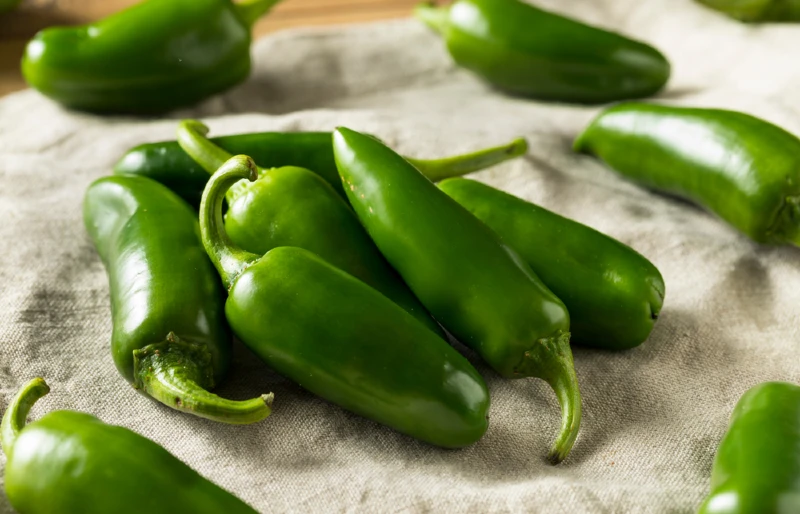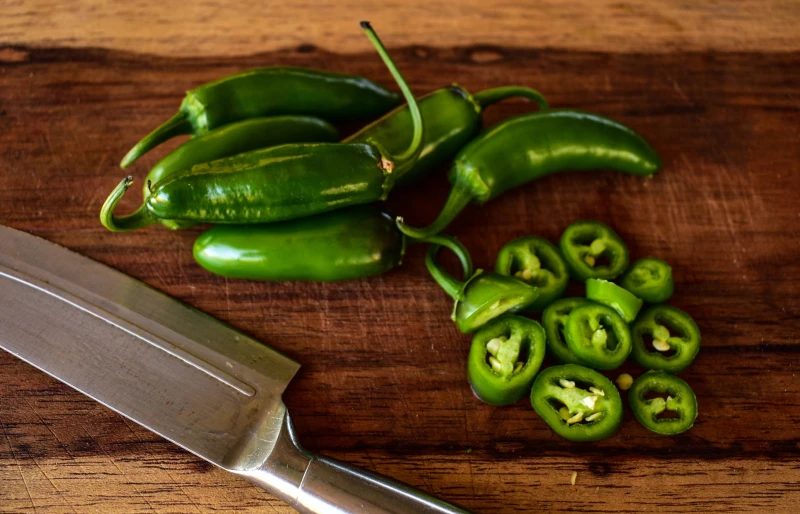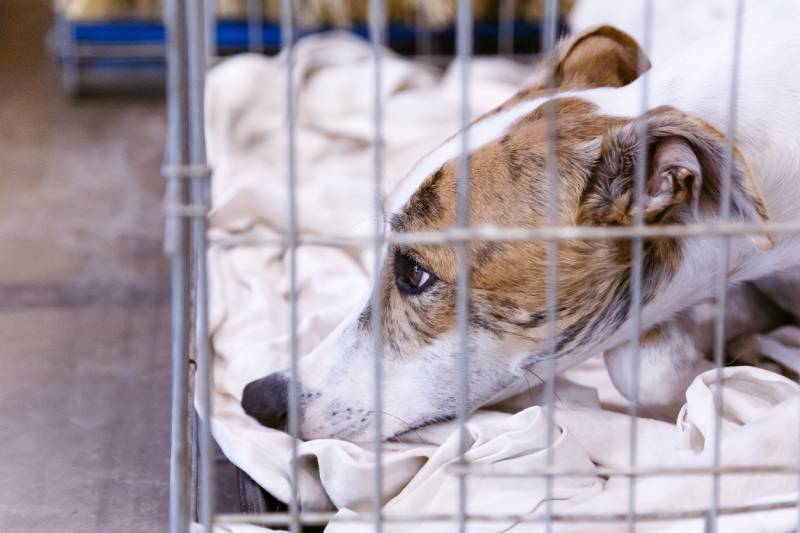- October 19, 2023
Can Dogs Eat Jalapeños? Vet-Reviewed Health Facts



The information is current and up-to-date in accordance with the latest veterinarian research.
We humans have a much more varied diet than any of our four-legged companions. Our pantries and refrigerators are full of foods that our doggies would just love the opportunity to get their paws on, but we have to be very mindful of what kinds of foods are safe for them to eat.
There are certain foods we eat that can make for a healthy, shareable snack for our dogs, but others are best avoided and could even be toxic. So, where do jalapeños stand? In short, jalapeños are not toxic to dogs, but they shouldn’t be allowed to eat them. We’ll talk about why below, so keep reading to learn more about why you should keep your pup away from these peppers.

Jalapeños & Why Your Dog Shouldn’t Eat Them
Jalapeños are a medium-sized chili pepper from the group of plants called capsicums. They are native to Mexico and Central America, and are among the most popular peppers that are used in a wide variety of recipes to add a little kick to the dish.
All capsicum plants, except for the bell pepper, produce a substance called capsaicin, which gives them their hot and spicy flavor (and capsicum spray its nasty sting). The level of spiciness for peppers is scored using the Scoville Scale, measured in Scoville Heat Units (SHU).
The Scoville scale is a measurement of the pungency of chili peppers, plus some other substances, based on the concentration of capsaicin. For perspective, jalapeños score between 2,500–8,000 SHU, compared to the score of 0 SHU for bell peppers, and 100,000–325,000 SHU for the habanero pepper.

Jalapeños Can Make Your Dog Sick
While jalapeños certainly aren’t the spiciest pepper out there, they still have quite the kick. As mentioned above, they are not considered toxic to dogs, but the capsaicin in the peppers can cause mild to severe gastrointestinal upset depending on how much was eaten.
Ingestion of jalapeños could lead to the following:
- Nausea
- Diarrhea
- Vomiting
- Stomach pain
- Gas
- Lack of appetite
- Lethargy
If your dog exhibits any of these signs after eating any food, you should contact your veterinarian right away for further advice.
Do Dogs Like Jalapeños?
Dogs have fewer taste buds than humans, having only 1,700 compared to our 9,000. This means that dogs do not have as sensitive a taste as we do, and while they can taste spicy foods, the spiciness of the jalapeño is not going to affect them as much.
Each dog is different when it comes to likes and dislikes. Some dogs may appear to have a taste for jalapeños, but it may just be that they like to eat whatever human foods they can gain access to. Since jalapeños are often used with other dishes, it may be the enticing smell from other food that draws them in. Regardless, whether on their own or within another dish, they should be kept away from your pooch.

My Dog Ate a Jalapeño – What Do I Do?
Dogs are opportunists and if they can get hold of a tasty snack, most won’t turn it down. This is why it is so important to keep human food secure and out of your dog’s reach. Accidents happen though, and if your dog has eaten a jalapeño, don’t panic. The best way to handle the situation is as follows:
Get the Peppers Out of the Way
First and foremost, remove the peppers so your dog no longer has access to eat any more than they already have. The less they eat, the better, so you need to separate the dog from the peppers. You may have to put your dog in a secure location, like their crate or another room, especially if they’ve made a mess.

Wash Your Hands and Their Paws
Capsaicin is particularly painful and irritant when it comes into contact with mucous membranes, particularly of the eyes. If you, or your dog, has some on your hands (paws) and rub it in the eye – ouch!
Check to See What Was Eaten
Once you have your dog separated from the food, you need to assess what they have ingested. Was it only jalapeños or did they eat the jalapeños that were part of another dish? Keep in mind that foods like onions, garlic, and leeks are all toxic to dogs. Since these foods are also used in a lot of recipes that involve jalapeños, you need to know if any toxic foods were also eaten.
Contact Your Veterinarian
Reach out to your veterinarian as soon as possible. If it is after hours and you don’t have access to your clinic, reach out to the Pet Poison Helpline or a local 24-hour emergency veterinary clinic.
Provide as many details as you can about what was eaten, how much was eaten, and when this happened. The advice and treatment protocols may be different depending on these answers, so you’ll need to follow your veterinarian’s guidance.
If only a small amount of jalapeño was eaten and there were no toxic foods involved, they may advise you to stay at home and watch for signs of illness. If a lot of jalapeño or toxic foods were ingested, you may need to take them in. This varies depending on the circumstances and your veterinarian will know what’s best.

Tips for Feeding Your Dog the Healthiest Diet Possible
Your dog should be getting all of their nutritional needs directly from their dog food, whether it be commercially available or homemade. Their food should be high quality, well-balanced, and suitable for their age, size, and activity level.
Treats should only make up 10% percent or less of a dog’s daily diet. There are plenty of high-quality treats on the market, but you can also choose to make them at home with the variety of recipes you can find online.
While we don’t recommend offering table scraps to your pup, some human foods can make for a healthy, nutritional snack you can offer without feeling like you’re leaving them out.
Best Human Food Snacks for Dogs
- Plain, cooked chicken, beef, turkey, pork, or fish
- Plain rice cakes
- Carrots
- Green Beans
- Pumpkin
- Blueberries
- Peanut butter (avoided added ingredients)
- Apples
- Watermelon
- Bananas
- Bell peppers – remember, the only member of the capsicum family that doesn’t contain capsaicin
If you ever have any questions regarding your dog’s diet or have concerns over the safety of certain foods, don’t hesitate to contact your veterinarian.

Conclusion
While jalapeños are not toxic to dogs, the substance that gives them their spice can cause some gastrointestinal issues and make your dog sick. Your dog should be fed a healthy, well-balanced diet and you should do your best to keep human foods secure and out of their reach. If your pup happens to get into some jalapeños or any other food that causes concern, you should reach out to your veterinarian for advice.
Featured Image Credit: Brent Hofacker, Shutterstock
Tags
What do you think?
Related Articles

New Puppy Checklist: Gear You’ll Need for Your New Dog
Getting a new puppy is really exciting, but before you welcome them home, it’s important to prepare your space for them. Since puppies need a

How Big Do Mini Poodles Get? Vet Reviewed Average Weight & Growth Chart – Dogster
The information is current and up-to-date in accordance with the latest veterinarian research. Learn more » When you buy a Miniature Poodle, you might not

Can Police Dogs Smell Nicotine? Vet Verified Facts & Info – Dogster
The information is current and up-to-date in accordance with the latest veterinarian research. Learn more » While cigarette sales have been declining steadily for decades,

How Old Is 5 in Dog Years? Vet-Approved Guide to Each Size of Dog – Dogster
The information is current and up-to-date in accordance with the latest veterinarian research. Learn more » A common method for calculating a dog’s age is

